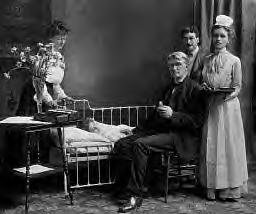Early alienists did not spare many conditions when it came to assessing insanity. Alcohol abuse, syphilis, and epilepsy, were often considered forms of insanity, as were the physical manifestations of a severe form of niacin deficiency called pellagra. Women with severe PMS or menopausal symptoms, or even too much interest in sex, could also be considered insane. Children did not escape that label, either.
In 1925, seven-year-old Alsa Thompson confessed to poisoning her family by putting sulphuric acid and ant paste in their evening meal. Fortunately, her intended victims found the taste so awful that they didn’t eat more than a bite or two of the meal, but the child’s troubled psyche had been exposed. Further investigation found that she had slashed her five-year-old sister’s wrists with a safety razor (which didn’t kill her), and had poisoned two canaries and a cat.
Judge Walter Gates dismissed the insanity complaint that had been brought against Alsa, but he did feel she needed to be under observation. He remanded Alsa into the custody of parole officer Jean McCracken of the local lunacy commission until she could be transferred to a state institution.
Newspaper accounts of the time mentioned that she did not seem bothered by the accusation and simply stated, “I like to see them die,” when questioned about her motives. Her father vigorously defended her, and others thought she was simply impressionable and confessed to a crime she did not commit.








